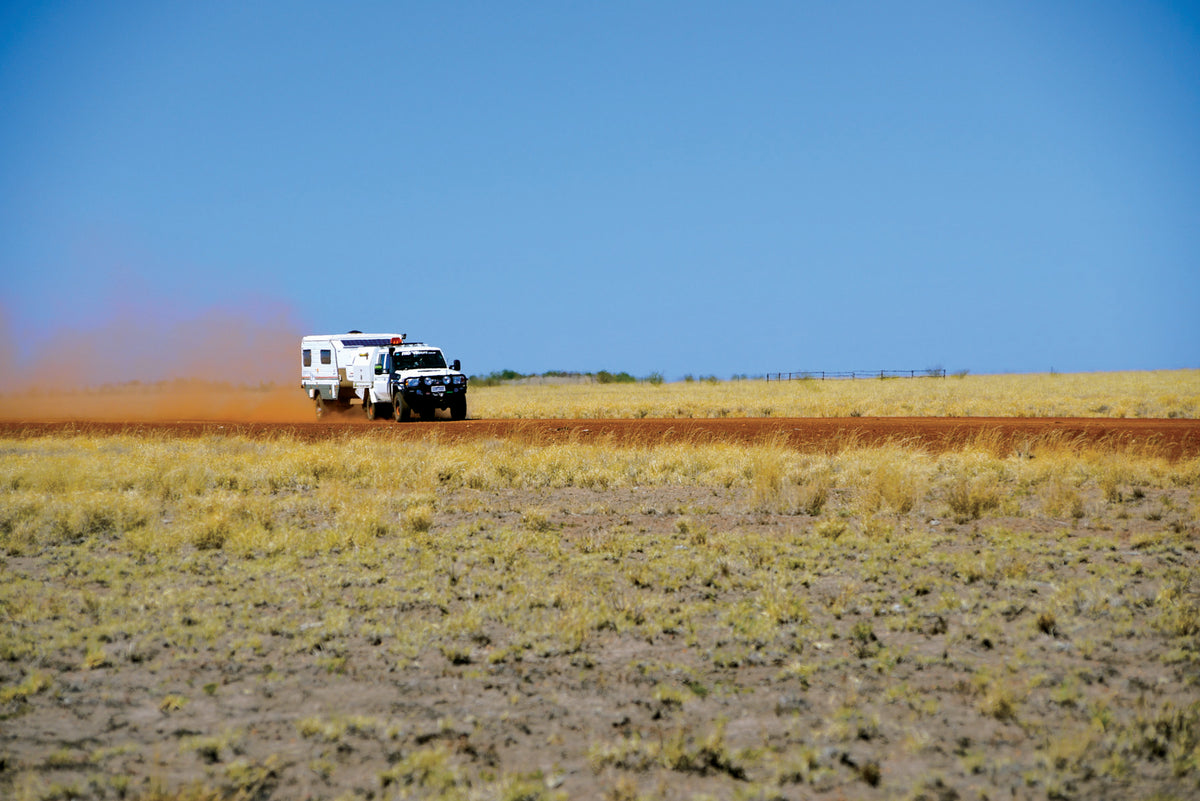
Hazards of Outback Travel
|
|
Time to read 3 min
|
|
Time to read 3 min
In the last few months we've done a bit of outback travel on dirt roads, the latest being a bit of a run across from Marble Bar to Alice Springs on what is essentially the Gary Junction Road.
As we were heading to Alice and turning onto the dirt of the Telfer Mine Road we were met by a very impressive sign warning of all sorts of dire consequences on travelling the route, short of dying. I thought it was a bit over the top. For starters the 'Remote Area No Fuel' statement was misleading; the longest distance between fuel was a measly 350km.
Earlier in Alice I heard a local radio station interview with a spokesperson for the local trucking industry saying how bad the dirt roads were in the Territory, so I was expecting the roads to be pretty crook. In fact, nothing could have been further from the truth; the Buchanan was as smooth as a dirt road could be and we hummed along it with ease. The Gary was pretty good with just a few corrugations between two of the bigger Aboriginal communities, while I heard from travellers the Tanami wasn't too bad either.
Still, it proved to me once again that asking people how a certain dirt road is at a particular time is a bit like asking 'how long is a piece of string?'. You'll get varying answers, all depending more on the person's experience of dirt roads than on the dirt road itself. A person who has just crossed Australia via the Anne Beadell and French Line will reckon most dirt roads are pretty damn good; for those who have never been on a dirt road in their life their perception will be almost diametrically opposite.
And anyway, the road is what it is, so take it as it comes. Lower tyre pressures, slow down and drive to the conditions... and really look at the bloody road so you can dodge big rocks, gutters and the like! I'm always surprised at some people's dirt road driving practices, who seem to just point the vehicle down the track and don't really look for obstacles in front of the vehicle. Yep, it takes concentration, much more so than on the blacktop, but it could well save a tyre, or worse. But no matter how careful you are, you can have a puncture or break something on your rig. That's much more common when you're on a dirt road; it'll just happen less often if you take it easy!
This latest sojourn, we had a tyre disintegrate when I didn't follow my own preaching of making sure your tyres are in good nick before setting off on an outback adventure. That held us up for a short time but was nothing too dramatic.
We had a few other minor issues as well; the sliding bolt latch on the camper's battery tray broke, allowing the tray to smash the battery door off. Then a couple of the plastic hinges broke on the main door of the camper. Before you say or think too much, our Trakmaster van is eight years old and has had a rough and varied life spending much of its time on unsealed roads and lumpy outback tracks.
A length of thin fencing wire fixed the battery slide, while a self-tapper screw fixed the door hinge. Something that took a bit longer to find and fix was a broken wire leading to the REDARC BMS auxiliary battery unit.
Still, none of these were major issues and we rolled along enjoying the desert country we were travelling through.
But there are some things that are beyond most people's capability to fix in the scrub.
I met two couples on this trip who had major computer/electronic failures with their almost brand new vehicles. One had broken down 200km south of Halls Creek on the Tanami Road and the other had stopped east of Ayers Rock. Both had been recovered by a flat-bed truck, with one going to Broome and the other to Alice Springs for expensive repairs.
In those situations you had better have a plan, a way of communication, or a good friend who can tow you to the nearest town or repair place. It's one of the reasons I always prefer to travel in company, not only for the social aspects, which are always enjoyable, but also for the safety, if anything does go wrong.
If I'm on my own I have a sat phone, or a HF radio, and I always carry enough gear and maintain the basic knowledge to fix most things... but not a major electronic failure. Like when I was on a remote Aboriginal road north of the Tanami and an electronic box failed – it was the only time I've had to call for outside assistance... and that's something that still niggles.
Anyway, what would you do? Have you a plan or the experience and equipment necessary to get out of a breakdown, whether it be minor or much more serious? You'd better!